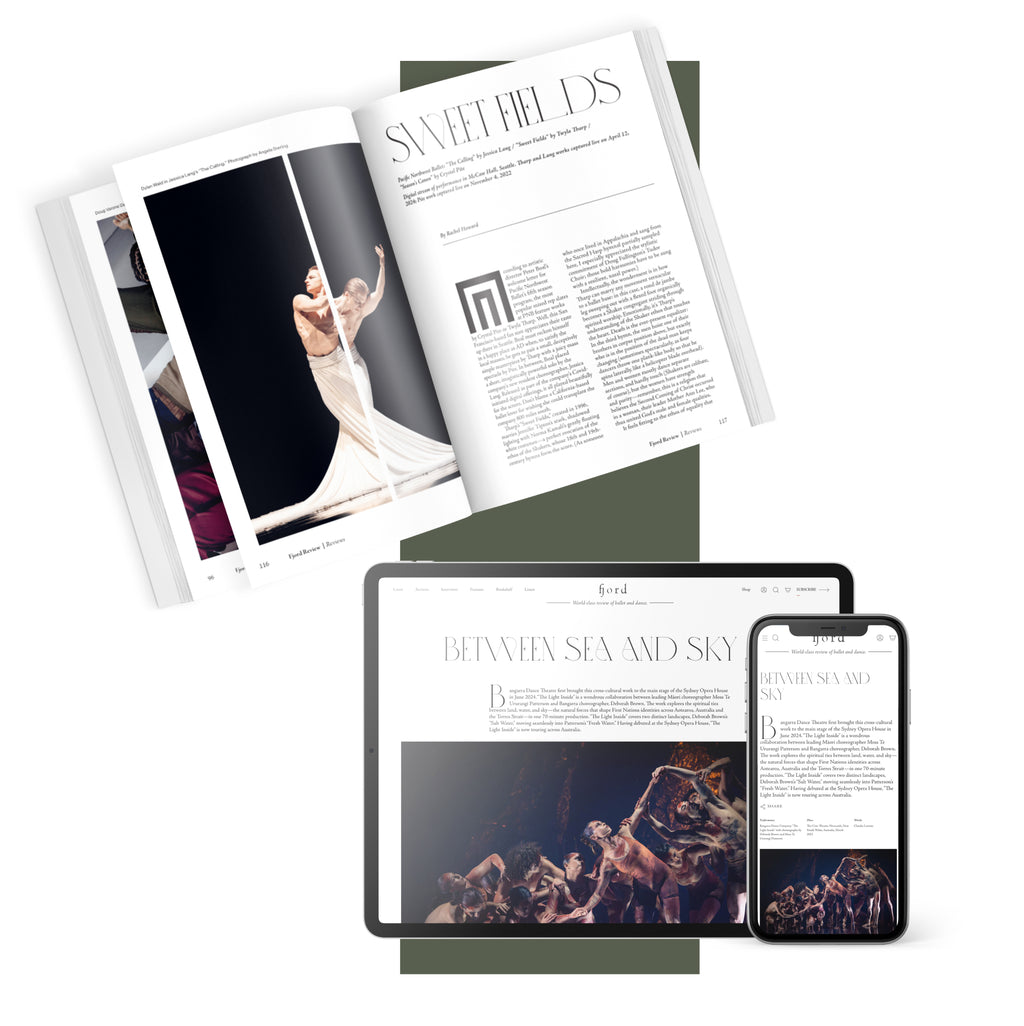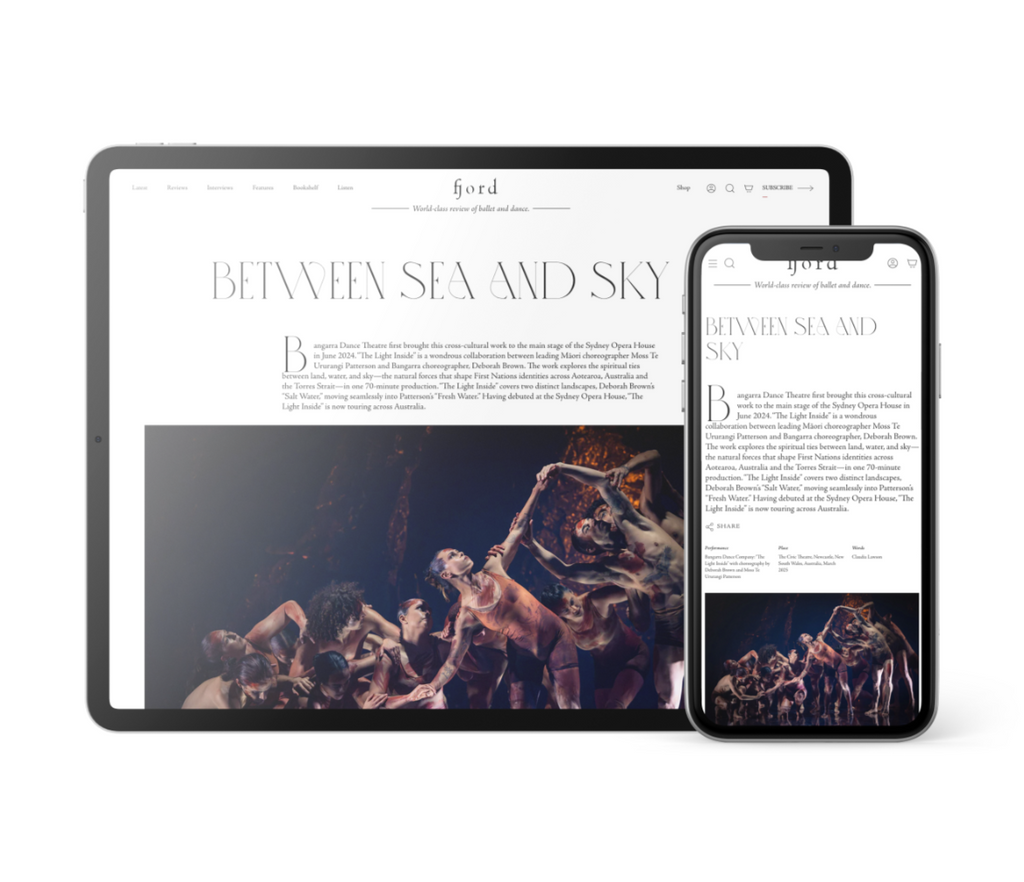You describe yourself as a movement artist and not just a dancer or choreographer. What’s that about?
When I started to make short films, I knew I was onto something, shall we say. I felt like I was doing more than just dancing. So many people used to tell me that it’s more, it’s stories. When I was living in L.A., I felt that dance had a certain stigma around it. When Gene Kelly, Fred Astaire were in the forefront, for me, in my generation, the dancer became background to the artist. It took a dip in prestige. My goal was to not only take this dance I love, but push the elevation of what a dancer could be. I felt like what I was creating was more than dance: It was movement, it was art.
What I’m creating has narrative, depth, substance, story. I’m not saying they have nothing to do with dance, but I’m using them as a tool to make something greater than dance. I’m also not saying dance hasn’t been doing that since the beginning of time, but dance wasn’t honored the way it should be.
Bringing it to the community was so unique, I needed to identify myself according to the quality of my work. Movement artist—so many people are calling themselves that—but when I first started doing that, it was more than just dance: Anybody can get up and dance, but movement art means something totally different, and we started to identify ourselves like that in 2009.
You and Lil Buck co-founded Movement Art Is, an initiative that uses dance as a tool for social change, healing and storytelling. Where did you two meet?
It was a tough time in my life. I was thinking, ‘Maybe I shouldn’t have moved to L.A. I’m broke and was prepared to go back home.’ Lil Buck and I met at the Debbie Reynolds [Performing Arts] Studio, and he was looking for a popper. What’s crazy, I realized the camaraderie I needed and what I was doing at that time came with Buck. That gave me the encouragement and spirit to do this.
I was also thinking that other people were struggling like me; I’m not the only one trying to figure it out. But I don’t like failing. I like to win. It’s a process, and you’re either built for it or not. On [Santa Monica’s] Third Street Promenade, I joined Buck’s performance group. We were close and both wanted to bring dance back to the greats—Astaire, Baryshnikov—to the forefront of artistry. We hit it off and were friends for about five or six years and started a company together: building a collective to take the art form of street dance to the highest levels. We worked on a lot of things and are working on our first feature film.
That sounds terrific. But before we get into Baryshnikov, I’d like to know about your process: music first, idea, steps?
It’s always music first for me. I live by, “How does it look, feel, sound?” But how does it sound is more like it. Even as a director, what do I see as the story, where is it taking place, what type of camera, stylistically, what am I wearing? How does it feel? What is the movement that is going to match the feeling I have? I want the audience to take this away from it. The perfect movement in my vocabulary is, ‘What do I want to pull out of an audience?’
Sonically, what music is going to take the film over the top? A lot of times you watch movies and don’t realize the score is creating [the emotion] that tears you up. Music is always first. When I listen to a song, I see the story, and ask how does it look? I want this person to play that role. What movement do I need to create?
And now, what was it like working with Misha?
Lil Buck and he were doing a campaign for [the clothing label] Rag & Bone. Buck was like my brother and was championing for me as creative director before anyone. He said, “I want to bring my friend Jon Boogz in.” I think they just brought me in at first to make Buck happy, but I prepared myself for opportunity, because I knew I was going to be in creative meetings.
My goal was to have the best ideas, so I came with a whole notebook of ideas. They didn’t realize I was tall—6’ 2,” so they said, “Can you, just for fun, try these clothes on?” I was there to be a creative consultant for Buck, but they asked, “Would you mind modeling this? We have Buck and Misha and all these models.” I thought, “Two different paychecks, I’m happy with that.”
During a lunch break Buck said that I was one of the best poppers in the world. I kept my mouth shut, but this was one of the coolest moments of my dance life, Buck bragging about me, so they gave me a solo and said, “We have five minutes, and whatever we capture, it may make the final cut.”
Then Misha comes behind the camera staring at me with a serious look, the pressure’s on. I start soloing, I blank out, I don’t know where I went, but I went somewhere. He walks up to me and has a big smile on his face, and we’re talking about technique. He asked, “What is that called?” If you look at that campaign, Misha wasn’t doing ballet, he was inspired by what Buck and I were doing. He was still [like] a student, inspired. It’s a memory I’ll hold for the rest of my life. That was empowering for me; I’m in the right place.





comments